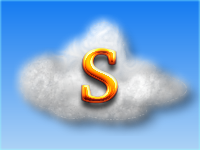Separating the Actions of the Jaw and Tongue Part 2
 We've just isolated both the jaw and tongue. Now we need to combine the jaw and tongue. The sounds that are probably the most difficult to do with tongue alone (read impossible to do without the jaw) are /s/ and /ʃ/ sounds. You can try to do them without the jaw, but it isn't really possible. (If you can do it without movement of your jaw, I say "yeah!" But most of us can't.) I'm going to offer you a chance to work on the sound "suh" [sʌ sʌ], allowing your jaw to move with the action of the tongue. Try to take time to let your tongue relax with it sitting inside your mouth. See if you can relax your jaw somewhat by making a /s/ sound, and carefully opening your mouth very slightly, trying to maintain a good /s/ quality.
We've just isolated both the jaw and tongue. Now we need to combine the jaw and tongue. The sounds that are probably the most difficult to do with tongue alone (read impossible to do without the jaw) are /s/ and /ʃ/ sounds. You can try to do them without the jaw, but it isn't really possible. (If you can do it without movement of your jaw, I say "yeah!" But most of us can't.) I'm going to offer you a chance to work on the sound "suh" [sʌ sʌ], allowing your jaw to move with the action of the tongue. Try to take time to let your tongue relax with it sitting inside your mouth. See if you can relax your jaw somewhat by making a /s/ sound, and carefully opening your mouth very slightly, trying to maintain a good /s/ quality.
The challenge for [sʌ sʌ] is in opening on to vowel. So we'll practice it here: make your open /s/ sound and then drop your jaw into the [ʌ] vowel. "sssss (drop) uh…" [ssssss ʌʌʌʌʌʌʌʌ].
As you can feel, the jaw drop is an important part of the release into the vowel. Take a moment to leave the sound out of it and explore the action of the jaw as if you were chewing a cloud. This image is designed to make the action of the opening and closing as light and easy as possible. Now, with the image firmly planted in your mind's eye, make your /s/ on a light cloud of action, integrating the jaw movement with the tongue.
Keeping the very light, easy chewing action sensation, and imagining a cloud of /s/, go back to half-whispering, half-speaking "suh suh suh suh suh," with an easy, almost lazy feel to it. Then add more voice to it, and kick the /s/ energy up a notch by making it /z/, so you're sighing on voice "zuh zuh zuh zuh zuh," [zʌ zʌ zʌ zʌ zʌ]. Try to find some pleasure in the sensation of an easy correlation between jaw and tongue, letting the sound out gently and playfully.
Finally, let's work on the jaw drop action on a tongue twister with lots of /s/ sounds in it.
Singing Sammy sung songs on sinking sand.
Each word (except "on") begins with an /s/, so there are lots of opportunities to work on the jaw drop on the vowel that follows. After quick exploration, you'll probably realise that the words with "close" vowels, like "Singing Sammy" and "sinking sand" require very little jaw drop, while the more open vowels, on "sung songs" demand more room, and allow you to drop your jaw more dramatically. See if you can say the tongue twister and really feel that jaw action in the middle of it. Keep imaging that "cloud" feeling we were working on before. Now, try this tongue twister, which has much more room for opening throughout:
Sounding by sound is a sound method of sounding sounds.
Each "sound" word affords you the opportunity to drop your jaw in order to get that "ou" [aʊ] sound out. Let your tongue tip shape the /s/, and your jaw jumps you to the vowel place.